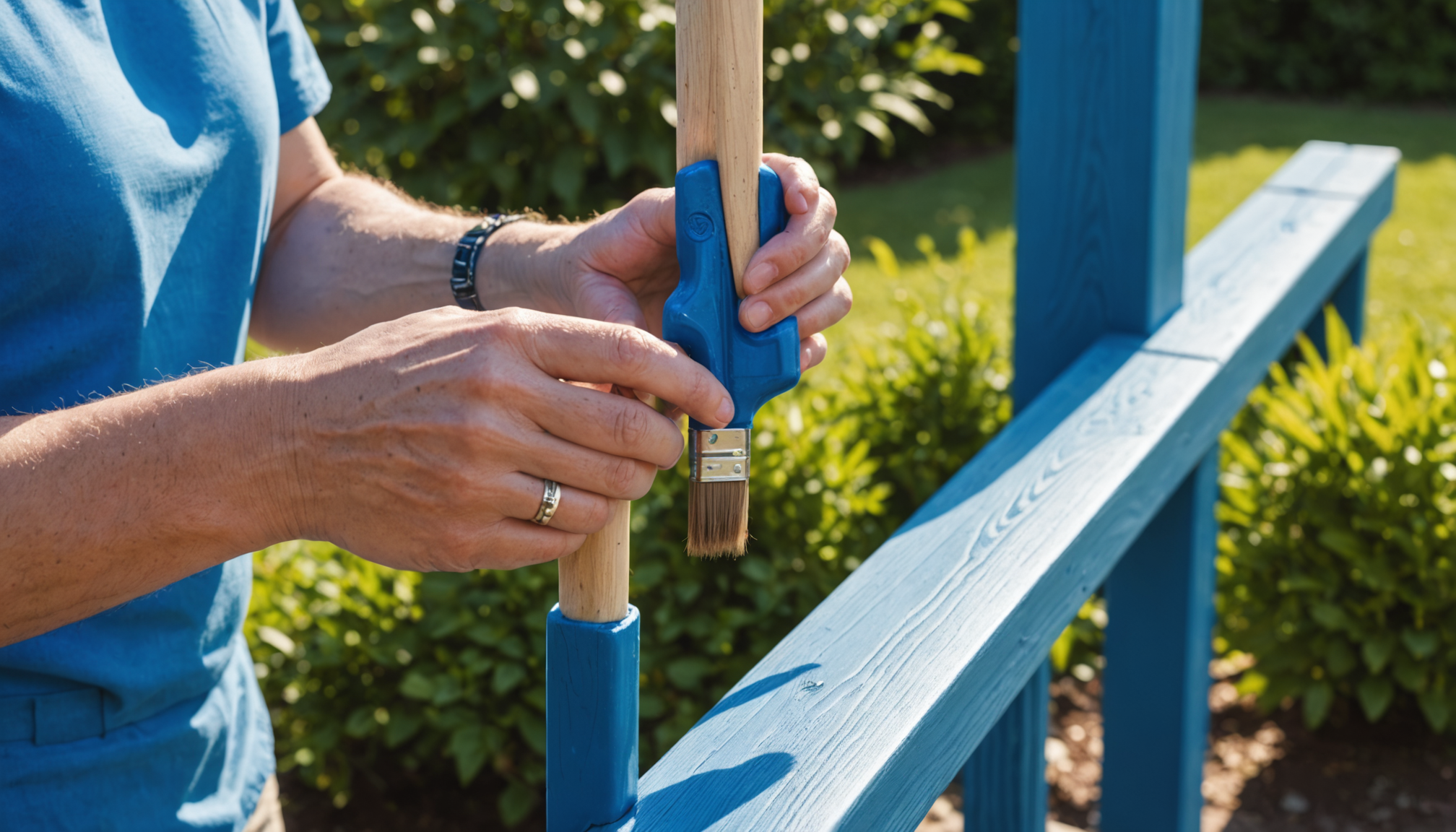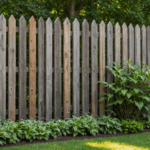Choosing the appropriate paint and tools is crucial for ensuring a beautiful and durable finish on your porch. The right selection will not only enhance the aesthetic appeal but also safeguard the flooring from the elements, prolonging its life. Begin by considering the type of porch you have—whether it’s enclosed, partially enclosed, or fully exposed to the weather. This will influence the type of paint you choose, as different conditions require different formulations for optimal results.
When selecting paint, opt for a product specifically designed for outdoor use. Exterior paints contain additives that improve durability and resistance to moisture, UV rays, and temperature fluctuations. For wooden porches, an acrylic-latex paint is typically recommended for its flexibility and ability to withstand expanding and contracting wood. Concrete porches, on the other hand, may benefit from epoxy paints that offer robust protection and are resistant to abrasion—ideal for high foot traffic areas.
While color choice largely depends on personal preference and current design trends, it’s important to think about practicality. Light colors may reflect heat and keep the porch cooler during the summer months, whereas darker shades might absorb more heat and show less dirt. To make an informed decision, here is a comparison table outlining key attributes of popular paint types:
| Paint Type | Benefits | Considerations |
| Acrylic-Latex | Flexible, UV resistant, ideal for wood | May require multiple coats |
| Epoxy | Highly durable, resistant to heavy traffic | Higher cost, more preparation needed |
| Oil-Based | Rich finish, excellent adhesion | Longer drying time, strong odor |
Selecting the right tools is just as important as choosing the right paint. The use of high-quality brushes and rollers can significantly impact the ease of application and the resulting finish. For edges and small details, angular sash brushes offer precision, allowing for smooth, sharp lines that make the final result look professional. Larger flat brushes are perfect for covering broad surfaces quickly, while rollers with varying nap lengths can accommodate different textures of flooring.
A paint sprayer might be worth considering if you are working with large areas, though it requires a bit more skill and preparation. This tool can provide a smooth, even coat in a fraction of the time it takes traditional methods, though care should be taken to protect surrounding areas from overspray.
Investing in quality tools not only makes the painting process more efficient but also helps ensure a quality finish. By carefully selecting your paint and tools, you are laying the groundwork for a porch that not only accentuates your home but also remains a valuable component of your outdoor living space for years to come.
preparing your porch for painting
Preparing your porch adequately before applying paint is a critical step that ensures the longevity and aesthetic of your paint job. Proper preparation of the surface will lead to better adherence and a superb finish. Here’s a step-by-step guide to help you prepare your porch:
1. Clear the Area:
– Remove all furniture, planters, rugs, and any other items from the porch. This keeps them out of the way and protects them from paint splashes and dust.
2. Inspect and Repair:
– Thoroughly check the porch for any damage, such as cracks, rot, or loose boards. Replace or repair damaged wood, nails, or screws. For concrete porches, use a concrete filler to patch up any holes or cracks.
3. Clean the Surface:
– Cleaning the porch is crucial for paint to adhere properly. Use a mixture of water and mild detergent to scrub the floor and other surfaces. For tougher stains or mildew, consider using a pressure washer; however, ensure the pressure setting is suitable to avoid damaging the surface.
4. Sand the Surface:
– For wooden porches, sanding is essential to smooth out any rough patches and remove any previous paint or stain. Use a medium-grit sandpaper for the initial sanding and follow up with a fine-grit for a smoother finish. On surfaces with previous coatings, ensure it’s sanded enough to promote good adhesion for the new paint.
5. Dust and Rinse:
– After sanding, sweep away the dust and use a hose or pressure washer to rinse off any remaining residue. Allow the porch to dry completely. Any moisture trapped under the paint could lead to bubbles and peeling.
6. Apply Primer:
– Depending on the condition and type of your porch flooring, apply a coat of primer. Primers are particularly useful on bare wood and will help the paint adhere better and enhance durability. Choose a primer compatible with your selected paint type. Allow the primer to dry thoroughly as per the manufacturer’s instructions.
7. Tape Off Areas:
– Use painter’s tape to protect areas you don’t want to paint, such as adjoining walls or trim. This will help in achieving sharp, clean lines and a neat finish.
By diligently preparing your porch, you’ll set the stage for a successful painting project that not only enhances your home’s curb appeal but also withstands weathering and foot traffic over time. Remember, prep work might be time-consuming, but it is a critical investment that pays off with a durable and beautiful finish.
techniques for applying paint
Applying paint to your porch requires a careful approach to ensure a consistent, smooth finish that enhances aesthetic appeal and stands the test of time. Whether you’re working with wood, concrete, or other materials, mastering the right techniques can make a significant difference in the outcome.
Begin by considering the layout and size of your porch. For larger areas, using a roller with an extension handle can make the process faster and reduce strain on your back. Opt for a roller with a nap suitable to the surface texture of your porch—shorter naps for smooth surfaces and longer ones to cover rougher textures. Consistency is key, so work in defined sections to maintain a wet edge, blending the paint seamlessly across joins.
When using a paintbrush, choose one with high-quality, synthetic bristles for better paint application and fewer stray bristles left behind. Start from the edges and corners to maintain clean lines before moving to the central surface, ensuring thorough coverage. Light, even pressure will help make sure the paint distributes uniformly without streaks or visible brush marks. This technique is particularly important when applying a second coat or addressing tricky areas such as corners and railings.
For those contemplating the use of a paint sprayer, keep in mind that while this tool offers rapid coverage and a smooth finish, it also demands precision. Proper technique involves maintaining the sprayer at a consistent distance and keeping the nozzle perpendicular to the surface to prevent uneven layers or runs. Overlapping each stroke by about 50% can help ensure even coverage. Always test the spray on a piece of cardboard before applying it to your porch to get accustomed to the equipment.
Regardless of your chosen method, pay particular attention to climatic conditions—painting in ideal weather is crucial. Mild temperatures with low humidity are best, as they allow paint to adhere better and reduce the risk of inconsistencies caused by rapid drying. If you’re applying multiple coats, it’s important to respect the drying times indicated by the manufacturer for each layer to avoid peeling and blistering.
Engaging in these techniques not only grants you a superior finish but also extends the life of your paint job, bringing vibrancy to your porch and ensuring your home stays on trend with modern design standards. With the right technique, your porch becomes a welcoming extension of your home, melding harmoniously with both the landscape and architectural features, while also reinforcing your smart home strategies by being an enduring facade in both function and fashion.
tips for drying and curing
Once the paint application process is complete, it’s essential to focus on drying and curing to achieve the best results for your porch. Properly drying and curing the paint not only impacts the immediate appearance but also influences the long-term durability and resistance to wear. Taking a proactive approach during this phase can significantly enhance the lifespan of your paint job.
Firstly, understand the difference between ‘drying’ and ‘curing.’ Drying refers to the evaporation of solvents and the paint’s initial firming up, while curing is the full hardening process where paint reaches its maximum hardness and durability. Curing times can vary significantly depending on the paint type, brand, and environmental conditions. While most paints dry to the touch within a day, complete curing might take several days to a few weeks, especially for more robust formulations like oil-based or epoxy paints.
Ensure that the environmental conditions during this period align with the manufacturer’s recommendations. Ideally, mild temperatures between 50°F to 85°F and low humidity will create optimal conditions for both drying and curing. Moist, cold, or overly hot conditions can interfere with these processes, potentially causing cracking, blistering, or uneven finishes. It’s worth noting that extreme weather conditions could prolong curing, so plan your project around a favorable weather forecast.
Ventilation is another crucial factor, especially for enclosed or covered porches. Good air circulation will help remove solvent fumes and accelerate drying, preventing the development of mildew or mold, which could undermine your efforts. If repainting sections indoors, consider using fans to enhance airflow and ensure a solvent-free environment.
Protect your porch during this critical time by limiting foot traffic. Even if the paint feels dry to the touch, it may still be vulnerable to scuffing or marking before it fully cures. Employ temporary barriers or signage to remind family members or visitors to temporarily steer clear, particularly for high-traffic flooring areas.
Prioritize cleanliness during the curing process. Avoid heavy cleaning or washing of the newly painted surfaces, as aggressive cleaning can disrupt the paint’s finish and even affect its longevity. After the paint has cured completely, gentle cleaning methods can be introduced to maintain its appearance without compromising durability.
Understanding and managing the drying and curing processes are key to ensuring your porch’s paint job stands the test of time, helping maintain its vibrant appearance. This careful attention to detail keeps your porch looking fresh and inviting, in keeping with current trends for achieving cohesive yet durable home exteriors. With patience and careful monitoring, you’ll set the stage for long-lasting results that blend seamlessly with the smart home concepts of functionality and style.
maintenance for long-lasting results
Proper upkeep is essential to ensure your porch stays vibrant and inviting, aligning with contemporary design trends and smart home principles. Once the paint has fully cured, establish a routine maintenance schedule that protects the integrity of your efforts. Sweep your porch regularly to prevent dirt and debris from accumulating. This basic care will help preserve the surface and reduce the risk of abrasion that could wear down the paint over time.
Consider applying a clear, protective topcoat specifically designed for outdoor use. This additional layer acts as a barrier against UV rays, moisture, and foot traffic, significantly enhancing the paint’s lifespan. For wooden porches, this can also help retain color vibrancy, protecting against the natural fading caused by exposure to the elements. Follow the manufacturer’s instructions for application and reapplication to ensure continuous protection.
When dealing with seasonal changes, be proactive. For example, inspect the porch during the transition into winter and summer. In winter, ensure there’s no standing water or snow accumulation that could seep into cracks and cause damage. In summer, keep an eye on any areas exposed to prolonged direct sunlight, as these are more prone to fading.
Regular touch-ups are a practical approach to maintaining your porch’s appearance. Inspect for chips, peeling, or any signs of wear, and address these issues promptly. By applying paint to affected areas as soon as they appear, you prevent the problem from spreading and safeguard the overall look.
Finally, consider adjusting your outdoor decor periodically to reduce the effects of wear patterns. Rotating furniture and planters helps prevent uneven fading or abrasion in high-use areas, maintaining a more uniform appearance across the porch flooring.
With these maintenance strategies, your porch will remain a lovely, functional part of your home, complementing the smart home ethos of sustainability and longevity while looking as inviting as the day you first painted it.
In conclusion, painting your porch can dramatically enhance your home’s curb appeal and provide a welcoming, durable space for relaxation and entertainment. By selecting the right paint and tools, preparing the surface meticulously, employing proper painting techniques, and ensuring thorough drying and curing, you lay the groundwork for success. With diligent maintenance, your porch can remain a stylish and functional extension of your home, embodying current design trends and the smart home focus on efficiency and aesthetics.


